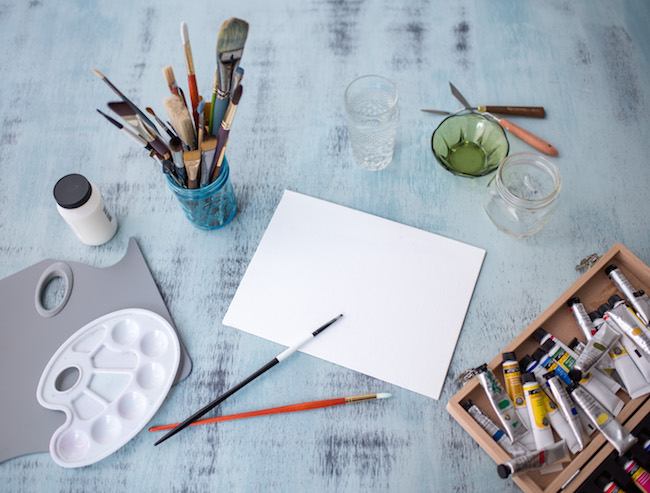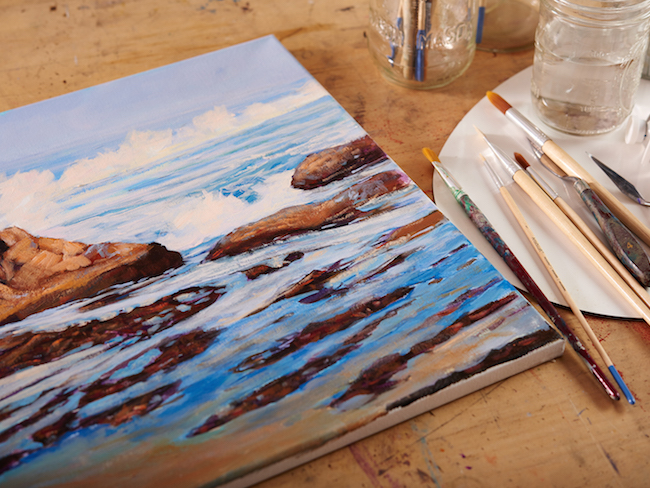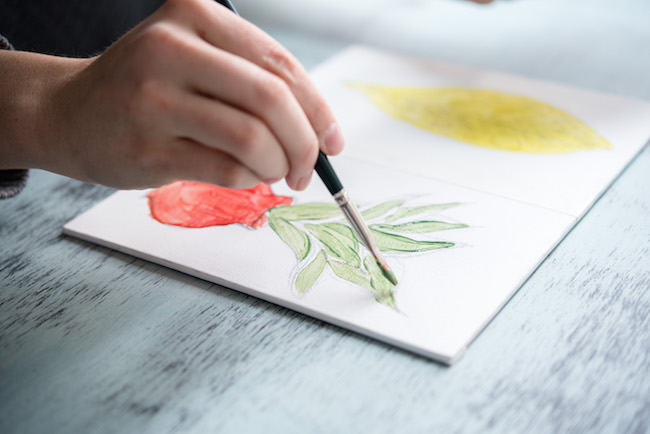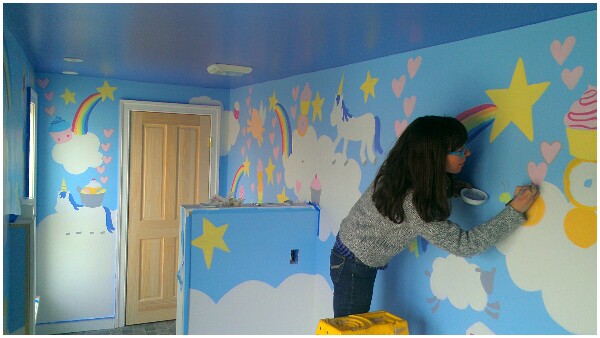 If you’ve worked with acrylic paint before, then you already know that it’s a painting medium suitable for all levels. It’s affordable, doesn’t require a lot of special equipment, and is easy to work with. But what you might not know is that it can be used on a great variety of different painting surfaces, from classic art surfaces to unexpected ones.
Before you get painting, discover some of the best surfaces for acrylic paint, with discussion as to why each one works and considerations.
If you’ve worked with acrylic paint before, then you already know that it’s a painting medium suitable for all levels. It’s affordable, doesn’t require a lot of special equipment, and is easy to work with. But what you might not know is that it can be used on a great variety of different painting surfaces, from classic art surfaces to unexpected ones.
Before you get painting, discover some of the best surfaces for acrylic paint, with discussion as to why each one works and considerations.
Top three surfaces for acrylic paint
Some of the top surfaces for painting with acrylic are canvas, paper and board. Let’s explore why.Canvas
 There’s a reason why many artists choose canvas as their surface of choice for acrylic paint. It’s readily accessible, it’s generally affordable and it delivers professional results.
Typically canvas is made of either woven cotton or linen. While both can be used with acrylic, cotton is more popular and readily available in art supply stores. You can also stretch your own canvas, or you can use canvas paper.
Since acrylic doesn’t contain oils that will degrade the fibers of canvas over time, priming the canvas isn’t as vital for achieving an archival quality. However, some find that priming the canvas is helpful for creating a receptive surface that won’t tear up your brushes as you paint. (Follow our steps for how to prime a canvas in this post.)
There’s a reason why many artists choose canvas as their surface of choice for acrylic paint. It’s readily accessible, it’s generally affordable and it delivers professional results.
Typically canvas is made of either woven cotton or linen. While both can be used with acrylic, cotton is more popular and readily available in art supply stores. You can also stretch your own canvas, or you can use canvas paper.
Since acrylic doesn’t contain oils that will degrade the fibers of canvas over time, priming the canvas isn’t as vital for achieving an archival quality. However, some find that priming the canvas is helpful for creating a receptive surface that won’t tear up your brushes as you paint. (Follow our steps for how to prime a canvas in this post.)
Paper
 Paper can provide a perfect surface for painting with acrylic…but with some conditions.
Since acrylic slightly contracts as it dries, it can wrinkle and warp thinner paper. So in general, avoid thin papers such as newsprint, construction paper or thinner drawing papers. Sturdier papers tend to work better, whether that’s a thick watercolor paper, bristol board or even heavier drawing papers.
If you do really want to use a thinner paper, you can secure the edges to a work surface using removable tape. This should to prevent it from warping too much.
Paper is a good choice for acrylic because it’s readily available and affordable. Like canvas, acrylic doesn’t require priming, but some painters like it to “level out” the texture or even to create a texture on the surface.
Paper can provide a perfect surface for painting with acrylic…but with some conditions.
Since acrylic slightly contracts as it dries, it can wrinkle and warp thinner paper. So in general, avoid thin papers such as newsprint, construction paper or thinner drawing papers. Sturdier papers tend to work better, whether that’s a thick watercolor paper, bristol board or even heavier drawing papers.
If you do really want to use a thinner paper, you can secure the edges to a work surface using removable tape. This should to prevent it from warping too much.
Paper is a good choice for acrylic because it’s readily available and affordable. Like canvas, acrylic doesn’t require priming, but some painters like it to “level out” the texture or even to create a texture on the surface.
Board
 Many types of board provide a great surface for painting with acrylic. Art boards such as museum board, illustration board, or fiber board are all ideal for painting with acrylic. The firmer texture means that they won’t warp as the paint dries.
However, it doesn’t have to be something you buy at an art supply store! Even humble cardboard or wooden boards can provide a great surface for painting with acrylic.
Many types of board provide a great surface for painting with acrylic. Art boards such as museum board, illustration board, or fiber board are all ideal for painting with acrylic. The firmer texture means that they won’t warp as the paint dries.
However, it doesn’t have to be something you buy at an art supply store! Even humble cardboard or wooden boards can provide a great surface for painting with acrylic.
Alternative painting surfaces for acrylic paint
 Photo via CakeSpy
One of the best things about acrylic is that it can be applied to a number of different painting surfaces. According to Winsor & Newton (a producer of acrylic paint and many more art supplies), the general rule is to avoid anything too greasy or glossy. I’d add to that it’s best to skip surfaces with too much texture that would tear up your brushes.
Photo via CakeSpy
One of the best things about acrylic is that it can be applied to a number of different painting surfaces. According to Winsor & Newton (a producer of acrylic paint and many more art supplies), the general rule is to avoid anything too greasy or glossy. I’d add to that it’s best to skip surfaces with too much texture that would tear up your brushes.
Some alternate painting surfaces on which acrylic can be applied include:
- Fabric
- Leather
- Some types of matte plastic (watch for peeling on shiny plastic surfaces)
- Photo paper
- Mirrors
- Sea glass
- Wood
- Thermoplastic elastomer (the stuff yoga mats are made 0f)
- Terra cotta
- Plaster
- Primed indoor walls (for wall murals)


Share tips, start a discussion or ask one of our experts or other students a question.
No Responses to “What's the Best Surface for Acrylic Paint?”